Tourism in Germany
Tourism in Germany
Tourist places in Germany
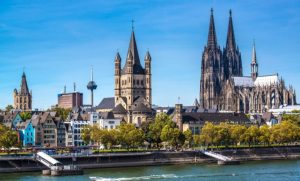
Information about tourism in Germany
Travel guide and important information about tourism in Germany, one of the most famous tourist destinations in the world. General advice for tourists about the best tourist cities and events in this European country.
Germany (German: Deutschland) (English: Germany) is a democratic federal republic and a member of the European Union. Its full name is the Federal Republic of Germany.
Berlin is the largest city and is the capital and the seat of power in it. The political system is federal, federal, and takes a democratic, republican form. Germany is divided into sixteen 16 federal regions, each with its own sovereignty and local government.
Germany is located in central Europe, bordered on the north by: the North Sea, Denmark and the Baltic Sea, to the south by Austria, Switzerland, to the east by Poland, the Czech Republic, and to the west by: France, Luxembourg, Belgium and the Netherlands.
Most of Germany enjoys a temperate climate with humid westerly winds. This climate is favored by the currents of the Atlantic Ocean, which is the northern extension of the Gulf Stream. These warmer conditions affect the regions bordering the North Sea, including the peninsula of Jutland and the protected area of the Gain River, which flows into the North Sea. This is the climate in the north and northwest peripheral. Rain falling throughout the year and be heavy during the summer.
Tourism in Germany
Winters are mild and summers tend to be cool, with temperatures that can exceed 30 degrees for long periods. From the east, the climate is more continental, as the winter is very cold, while the summer is warm, and long droughts may occur. The regions of South and Central Germany are volatile regions as they change from temperate ocean to continental. And again, temperatures can exceed 30 degrees Celsius. (86 degrees Fahrenheit).
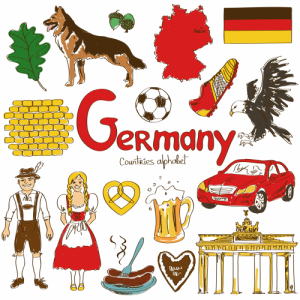
Culture and history
The German cultural scene is dense and distributed on several levels, such as the urban renaissance, literature, plastic arts and music.
Among the most famous festivals and performances:
Berlin Celebration Week
Philharmonic in Berlin,
Alma Festival Berlin (Berlinale)
Night of the Berlin museums in Berlin,
Book fair in Frankfurt,
Book fair in Leipzig
Germany has historically been known as “the land of poets and thinkers” and since 2006 it has called itself “the land of ideas.” From the very beginning, the cultural movement in Germany was shaped by popular religious and civic currents in Europe. In sum, it is difficult to define German traditions in isolation from European culture.
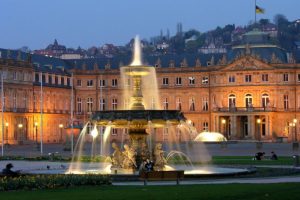
All arts have their place and place in Germany, from the impressionist arts to expressionism, contemporary arts and postmodern arts, in addition to, of course, the arts of old teachers. Germany plays a prominent role in the contemporary global art movement.
There are about 6,250 museums in Germany, ranging from artistic, historical, technical, architectural, literary or natural to nature. Frankfurt is characterized by the existence of a museum island on the banks of the River Main,
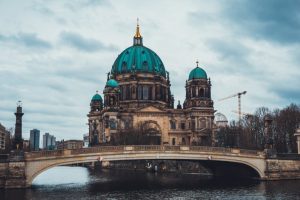
Tourist areas in Germany
Stuttgart
Stuttgart, the capital of the state of Baden-Württemberg in southwestern Germany, is known as a manufacturing center for Mercedes-Benz and Porsche, and there are headquarters and auto museums. The city is filled with greenery, which wraps around its center. Popular parks include Rosensteinpark and Killesbergpark. Wilhelm Park, one of the largest zoos and botanical gardens in Europe, is located northeast of Rosentine Castle.
It also includes cultural and contemporary sites such as the Stadtbibliothek (public library) and the Kunstmuseum (museum of contemporary art), with its shops and cafes. The Altes Schloss (Old Castle) is now a museum that displays regional artifacts. The bohemian quarter of the city is filled with 14th century buildings housing shops and restaurants.
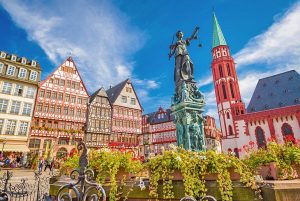
Berlin
Berlin, the capital of Germany, dates back to the thirteenth century. Reminders of the city’s tumultuous twentieth century history include the Holocaust memorial and remnants of the Berlin Wall. The 18th-century Brandenburg Gate, split during the Cold War, is a symbol of reunification. The city is also famous for its art scene and modern landmarks such as the House of Music, which is roofed with gold, and built in 1963.
The Tiergarten district, near the Brandenburg Gate, has an enormous park and parliament that dates back to the 19th century. Museum Island, in the River Spree, houses the Neues Museum, with its comprehensive Egyptian collection. The Museum of Pergamon Archaeological masterpieces include Greek, Roman and Islamic works. The nightlife ranges from trendy restaurants and bars to cave techno clubs in the city’s industrial districts. Shopping includes high-end boutiques on bustling Friedrichstraße and antique stores in the bohemian Kreuzberg district.
Munich
Munich, the capital of Bavaria, is home to old buildings and many museums. The city is famous for its annual Oktoberfest and its beer halls. The central square of Marienplatz contains landmarks such as City Hall.
Other notable sites include the 12th-century St. Peter’s Church and the 15th-century Frauenkirche Cathedral, with its twin bell towers. The Neoclassical National Theater and the Rococo Theater Cuvilliés (in the luxurious Residenz Palace and museums) host performances by the Opera and the State Ballet. Highlights of the Museum Quarter include the Pinakothek Museums that display everything from Old Masters to Art Nouveau.

Frankfurt
Frankfurt, a German city
Centrale, located on the River Main, is a major financial center home to the European Central Bank. It is the birthplace of the famous writer Johann Wolfgang von Goethe, whose home is now in the Goethe House Museum. Like much of the city, it was damaged during World War II and later rebuilt.
The town square houses a row of traditional half-timbered houses and the gothic Frankfurt Cathedral. Romer, a trio of homes of aristocrats in the Middle Ages, and town hall have served since the early 1400s. The Bankenviertel district is filled with tall skyscrapers. Zell, lined with department stores, is the main shopping street in the city. The Sachsenhausen district on the south side of the river is connected to the Altstadt by a footbridge. It houses the Goethe Tower and Embankment Museum, and is the site of several museums, including the Städel Fine Arts Museum and Deutsches Filmmuseum dedicated to the history of cinema.
